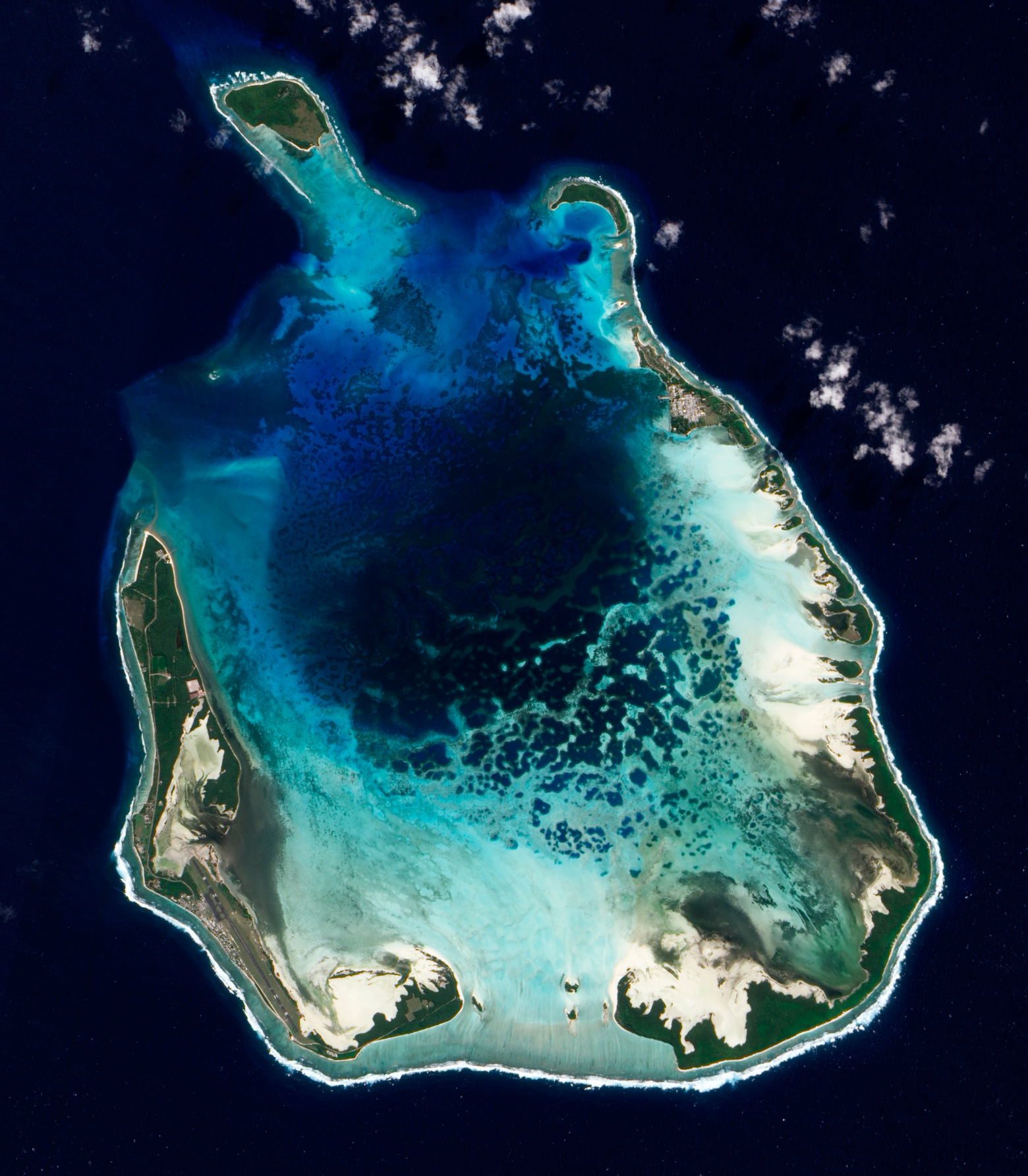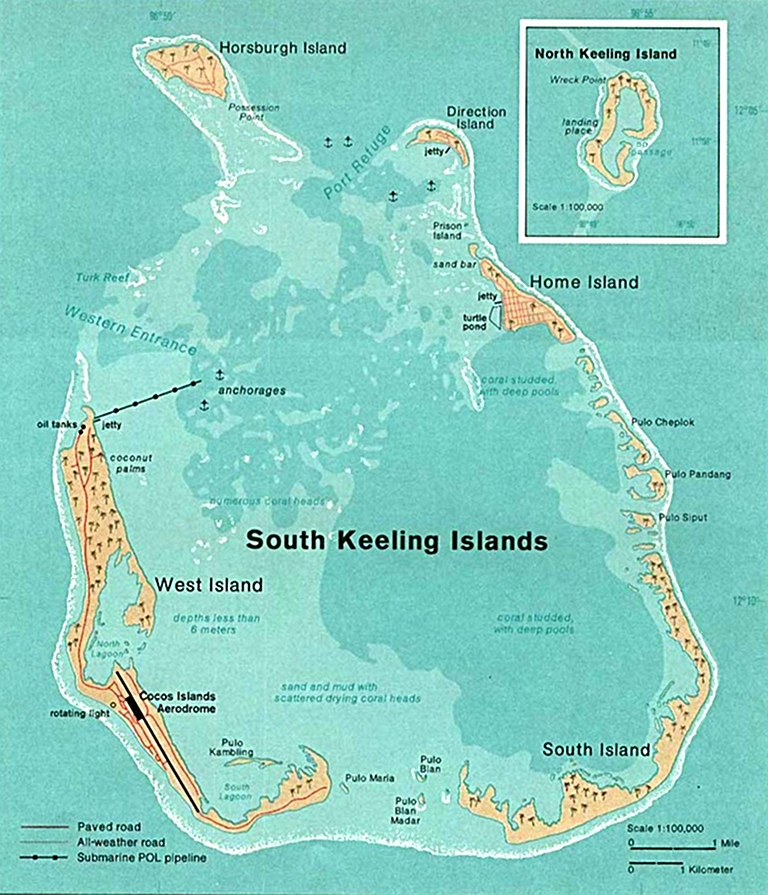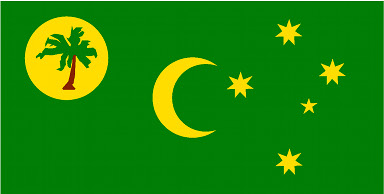|
|
|
|
136
SQN Royal Air Force
|
|
|

Spitfire Mk VIIIs and
personnel of
No.136 Squadron RAF lined up on a recently-laid PSP airstrip on Brown's
West Island, Cocos Islands, in the Indian Ocean.

A new mainplane being
fitted to a
Supermarine Spitfire Mark VIII of No. 136 Squadron RAF on Brown's West
Island, Cocos Islands, in the Indian Ocean. Behind it is a Consolidated
Liberator B Mark VI of No. 99 Squadron RAF, also based on the Island.
A Supermarine Spitfire Mark VIII of No. 136
Squadron RAF prepares to taxy to its take off point on newly-finished
airstrip at Brown's West Island, Cocos Islands. Other aircraft of the
Squadron are being serviced in the background.
Indian Army engineers lay Perforated Steel
Planking
(PSP) on the new airstrip at Brown's West Island, Cocos Islands, while
in the background the Supermarine Spitfire Mark VIIIs of No. 136
Squadron RAF are serviced, shortly after their arrival.
Men of the Indian Pioneer
Corps and civilian workers engaged in the construction of the airstrip
on Brown's West Island, Cocos Islands, pause to watch the first take
off from the base, by Supermarine Spitfire Mark VIIIs of No. 136
Squadron RAF. 300 yards of the runway remained to be completed at the
time.
|
|
|
684
SQN Royal Air Force
|
|
|
Long
range De Havilland Mosquito PR Mark XXXIV, RG203 'E', of No. 684
Squadron RAF Detachment is towed into position for take off at Brown's
West Island, Cocos Islands. Note the unusual camouflage with azure blue
lower surfaces, and silver upper surfaces. Thirty eight sorties were
flown by 684 SQN from the Cocos Islands. The PR.XXXIV variant carried
additional fuel in a bulged bomb bay tank, yielding a combat radius of
~1500 NMI.
Leading
Aircraftmen H Hindmarsh of Birtley, County Durham, and C Parrish of
South Norwood, London, carry a 100-imperial gallon long-range fuel tank
past De Havilland Mosquito PR Mark XXXIVs of No. 684 Squadron RAF
Detachment, parked on bitumenised hard-standing at Brown's West Island,
Cocos Islands
 ROYAL
AIR FORCE PHOTOGRAPHIC RECONNAISSANCE MOSQUITO IN FLIGHT OVER BENGAL,
MARCH 1945© IWM (TR 2788) ROYAL
AIR FORCE PHOTOGRAPHIC RECONNAISSANCE MOSQUITO IN FLIGHT OVER BENGAL,
MARCH 1945© IWM (TR 2788)
De
Havilland Mosquito PR XVI, NS787M, of No 684 Squadron, Royal Air
Force based at Alipore. The aircraft, piloted by Flight Lieutenant C G
Andrews, a New Zealander, is carrying a 100-gallon auxiliary tank under
each wing. The silver painted plane has dark blue SEAC bands.
Mosquito
PR Mark 34, RG176, at Boscombe Down, Wiltshire. This aircraft was to
serve with No. 684 Squadron RAF in South-East Asia.
De Havilland Mosquito PR Mark XVI, NS688 'SNAKE', on the ground at
Karachi, India, following a record-breaking flight from the United
Kingdom. The pilot, Flight Lieutenant J Linton, and his navigator,
Warrant Officer E J Goudie, covered the distance in an overall time of
16 hours 46 minutes, (with stops at El Adem, Libya, and Shaibah), to
beat the existing record by 5 hours and 27 minutes. The flight was
undertaken to test the practicability of RAF Transport Command using
the Mosquito for a fast freight service between Britain and India.
NS688 subsequently served as a photo-reconnaissance aircraft with No.
684 Squadron RAF in Burma.
 AIRCRAFT IN ROYAL AIR FORCE
SERVICE, 1939-1945: DE HAVILLAND DH.98 MOSQUITO.© IWM (CI 1088) AIRCRAFT IN ROYAL AIR FORCE
SERVICE, 1939-1945: DE HAVILLAND DH.98 MOSQUITO.© IWM (CI 1088)
Mosquito PR Mark XVI, NS787 M, of No. 684 Squadron RAF, preparing to
take off at Alipore, India.
|
|
|
99
SQN Royal Air Force
|
|
|
Consolidated
Liberator B Mark VI
of No. 99 Squadron RAF throws up spray from recent rain while taking
off on its last bombing mission of the war from the recently laid PSP
airstrip on Brown's West Island, Cocos Islands.
Two
Consolidated Liberator B Mark VIs of No. 99 Squadron RAF based at
Dhubalia, India, bombing through clouds during a daylight attack by 12
aircraft, escorted by USAAF fighters, on the Japanese-held airfield at
Zayatkwin, Burma. The unit redeployed to the Cocos Islands in June,
1945.
Consolidated
Liberator B Mark VIs of No. 99 Squadron RAF, with their attendant
ground crews, lined up at Dhubalia, India.
|
|
|
356
SQN Royal Air Force
|
|
|
Consolidated
Liberator B Mark VI, KL654 'R', of No. 356 Squadron RAF, about to be
'bombed-up' on the newly-established airstrip at Brown's West Island
for the Squadron's first operational mission, and the first bombing
operation to be flown from the Cocos Islands. One week later, KL654 and
its crew went missing while on a special duties flight over Thailand.
Armourers
assemble
500-lb MC bombs for loading into Consolidated Liberator B Mark VI,
KL654 'R', of No. 356 Squadron RAF, for the Squadron's first
operational mission, and the first bombing operation flown from Brown's
West Island, Cocos Islands.
Consolidated Liberator B Mark VI, KN752 'F', of No. 356 Squadron RAF,
takes off from the unfinished runway at Brown's West Island, on the
Squadron's first operational sortie, and first bombing operation
undertaken from the Cocos Islands. This was one of seven Liberators
which were despatched to bomb two Japanese-held airstrips near
Benkoelen, Sumatra.
Indian
Army engineers pause in their work to complete the airfield at Brown's
West Island as a Consolidated Liberator B Mark VI of No. 356 Squadron
RAF takes off on the Squadron's first operational sortie, and first
operation undertaken from the Cocos islands. Seven Liberators were
despatched to bomb two Japanese-held airstrips near Benkoelen, Sumatra.
The engineers are using a caterpillar grader to level the ground next
to the runway, on which the bitumenised strips stacked in the
foreground will eventually be laid.
A
Consolidated Liberator B Mark VI of No. 356 Squadron RAF, landing on
three engines at Brown's West Island, Cocos Islands, after completing
the Squadron's last bombing sortie against the Japanese. Liberators of
No. 99 Squadron RAF can be seen parked in the background.
A
Consolidated Liberator B Mark VI of No. 356 Squadron RAF, parked on the
bitumenised hard-standing at Brown's West Island, Cocos Islands,
against a background of coconut palms and surf.
Ground
crews of No.356 Squadron RAF based at the Brown's West Island, Cocos
Islands, celebrate in front of one of their Consolidated Liberator Mark
B VIs on hearing the news of the surrender of Japan.
Serving with a Royal Air Force Liberator bomber squadron on the Cocos
Islands, Leading Aircraftman Alan Sijjers passes Leading Aircraftman
Peter Ansell a quick release bag full of leaflets announcing the
Japanese surrender in English, Dutch and Urdu. The leaflets would be
dropped over prisoner of war camps in the Dutch East Indies and
Singapore areas.
Ground
crew of 356 Squadron based on the Cocos Islands load bomb trollies with
containers holding medical supplies in preparation for loading them
aboard the unit's Liberator aircraft. These containers were dropped
over Allied prisoner of war camps in the Dutch East Indies and
Singapore areas following the Japanese surrender.
Leading
Aircraftman P Smith (front) and Leading Aircraftman T Bell of 356
Squadron based on the Cocos Islands load containers holding medical
supplies aboard a Liberator bomber. These containers were dropped over
Allied prisoner of war camps in the Dutch East Indies and Singapore
areas following the Japanese surrender.
Leading
Aircraftman F Duffy of 356 Squadron based on the Cocos Islands is
adjusting parachute cords on containers holding medical supplies that
will be dropped over Allied prisoner of war camps in the Dutch East
Indies and Singapore areas following the Japanese surrender.
|
|
|
231
Group Royal Air Force
|
|
|
Consolidated
Liberator B Mark VIs of No. 231 Group RAF, head out on a bombing raid
to Rangoon, Burma from their base in India, escorted by a Republic
Thunderbolt, (extreme left). Japan surrended before remaining 231 Group
squadrons could
deploy to the Cocos Islands.
500-lb
GP bombs on their trolleys, await loading into a Consolidated Liberator
B Mark VI of No. 231 Group RAF, at an airfield in India.
Oblique
aerial photograph showing bombs exploding among transshipment sheds and
jetties on Chatham Island, during a raid by Consolidated Liberators of
No. 231 Group on Port Blair in the Andaman Islands.

ROYAL AIR FORCE OPERATIONS IN THE FAR EAST, 1941-1945.© IWM (C 5054)
A
Consolidated Liberator of No. 231 Group flys over a 200-foot wooden
railway bridge after its destruction with 1,000-lb bombs; one of three
bridges on the Burma-Siam railway south of Thanbyuzayat, which were
destroyed in a low-level daylight attack.
A
Consolidated Liberator B Mark VI of No. 355 Squadron RAF on the return
flight to Salbani, India, after bombing the railway sidings at Na Nien,
near Chumphon, Thailand. This was the longest raid yet accomplished by
No. 231 Group, involving a round trip of 2,500 miles for over 80
Liberators based in India.
Consolidated Liberators of No. 231 Group fly away from the
smoke-covered target area after bombing the oil and petroleum depots at
Yenangyaung, Burma.
Part of a vertical aerial photograph showing a Consolidated Liberator
of No. 132 Wing RAF flying over the target during a daylight attack on
a bridge in Burma.
A Consolidated Liberator of No. 231 Group flying above the target area,
which is largely obscured by smoke from earlier bomb explosions, during
a combined daylight attack by RAF and USAAF aircraft on Japanese stores
areas in Rangoon, Burma.
|
|
|
205
SQN Royal Air Force
|
|
|
Short
Sunderland GR Mark V, RN293 'J' of No. 205 Squadron RAF Detachment,and
a Consolidated Catalina Mark III, probably of No. 321 Squadron
(Netherlands) RAF
Detachment, moored off Direction Island, Cocos Islands.
 ROYAL
AIR FORCE OPERATIONS IN THE FAR EAST, 1941-1945.© IWM (CI 1549) ROYAL
AIR FORCE OPERATIONS IN THE FAR EAST, 1941-1945.© IWM (CI 1549)
A
Short Sunderland GR Mark V of No. 205 Squadron RAF Detachment, moored
off Direction Island, Cocos Islands, about to be refuelled from a
petrol tanker embarked on board a Tank Landing Craft.
|
|
|
160/203/321
SQN Royal Air Force
|
|
|
Airmen
of the Photographic Section unload muff-covered Type F.24 aerial
cameras from the back of a truck, for installation in Consolidated
Liberator Mark III, FL935 'S', of No. 160 Squadron RAF at
Kankesanturai, Ceylon. The electrically-heated muff-warmers prevented
the cameras from freezing up when the aircraft was flying at high
altitudes.

AMERICAN AIRCRAFT IN ROYAL AIR FORCE SERVICE 1939-1945:
CONSOLIDATED MODEL 32 LIBERATOR.© IWM (CH 20692)
Liberator
GR Mark VI, EV882 4-L, of No. 206 Squadron RAF, based at St Eval,
Cornwall, in flight. Detachments of Liberator GR.VI and VIII maritime
patrol aircraft were flown by 160 SQN, 203 SQN and 321 (Netherlands)
SQN, in 222 GP, from Brown's West Island, Cocos Islands.
 AMERICAN
AIRCRAFT IN ROYAL AIR FORCE SERVICE 1939-1945: AMERICAN
AIRCRAFT IN ROYAL AIR FORCE SERVICE 1939-1945:
CONSOLIDATED LIBERATOR.© IWM (ATP 13091C)
Liberator
GR Mark VIII, KG984 on the ground. The aircraft served with Nos. 224,
59 and 220 Squadrons RAF.
|
|
|
|
|
|
![Home - Air Power Australia Website [Click for more ...]](APA/APA-Title-Main.png)
![Sukhoi PAK-FA and Flanker Index Page [Click for more ...]](APA/flanker.png)
![F-35 Joint Strike Fighter Index Page [Click for more ...]](APA/jsf.png)
![Weapons Technology Index Page [Click for more ...]](APA/weps.png)
![News and Media Related Material Index Page [Click for more ...]](APA/media.png)
![Surface to Air Missile Systems / Integrated Air Defence Systems Index Page [Click for more ...]](APA/sams-iads.png)
![Ballistic Missiles and Missile Defence Page [Click for more ...]](APA/msls-bmd.png)
![Air Power and National Military Strategy Index Page [Click for more ...]](APA/strategy.png)
![Military Aviation Historical Topics Index Page [Click for more ...]](APA/history.png)
![Intelligence, Surveillance and Reconnaissance and Network Centric Warfare Index Page [Click for more ...]](APA/isr-ncw.png)
![Information Warfare / Operations and Electronic Warfare Index Page [Click for more ...]](APA/iw.png)
![Systems and Basic Technology Index Page [Click for more ...]](APA/technology.png)
![Related Links Index Page [Click for more ...]](APA/links.png)
![Homepage of Australia's First Online Journal Covering Air Power Issues (ISSN 1832-2433) [Click for more ...]](APA/apa-analyses.png)
![Home - Air Power Australia Website [Click for more ...]](APA/APA-Title-Main.png)
![Sukhoi PAK-FA and Flanker Index Page [Click for more ...]](APA/flanker.png)
![F-35 Joint Strike Fighter Index Page [Click for more ...]](APA/jsf.png)
![Weapons Technology Index Page [Click for more ...]](APA/weps.png)
![News and Media Related Material Index Page [Click for more ...]](APA/media.png)
![Surface to Air Missile Systems / Integrated Air Defence Systems Index Page [Click for more ...]](APA/sams-iads.png)
![Ballistic Missiles and Missile Defence Page [Click for more ...]](APA/msls-bmd.png)
![Air Power and National Military Strategy Index Page [Click for more ...]](APA/strategy.png)
![Military Aviation Historical Topics Index Page [Click for more ...]](APA/history.png)
![Intelligence, Surveillance and Reconnaissance and Network Centric Warfare Index Page [Click for more ...]](APA/isr-ncw.png)
![Information Warfare / Operations and Electronic Warfare Index Page [Click for more ...]](APA/iw.png)
![Systems and Basic Technology Index Page [Click for more ...]](APA/technology.png)
![Related Links Index Page [Click for more ...]](APA/links.png)
![Homepage of Australia's First Online Journal Covering Air Power Issues (ISSN 1832-2433) [Click for more ...]](APA/apa-analyses.png)






![Sukhoi PAK-FA and Flanker Index Page [Click for more ...]](APA/flanker.png)
![F-35 Joint Strike Fighter Index Page [Click for more ...]](APA/jsf.png)
![Weapons Technology Index Page [Click for more ...]](APA/weps.png)
![News and Media Related Material Index Page [Click for more ...]](APA/media.png)
![Surface to Air Missile Systems / Integrated Air Defence Systems Index Page [Click for more ...]](APA/sams-iads.png)
![Ballistic Missiles and Missile Defence Page [Click for more ...]](APA/msls-bmd.png)
![Air Power and National Military Strategy Index Page [Click for more ...]](APA/strategy.png)
![Military Aviation Historical Topics Index Page [Click for more ...]](APA/history.png)
![Information Warfare / Operations and Electronic Warfare Index Page [Click for more ...]](APA/iw.png)
![Systems and Basic Technology Index Page [Click for more ...]](APA/technology.png)
![Related Links Index Page [Click for more ...]](APA/links.png)
![Homepage of Australia's First Online Journal Covering Air Power Issues (ISSN 1832-2433) [Click for more ...]](APA/apa-analyses.png)